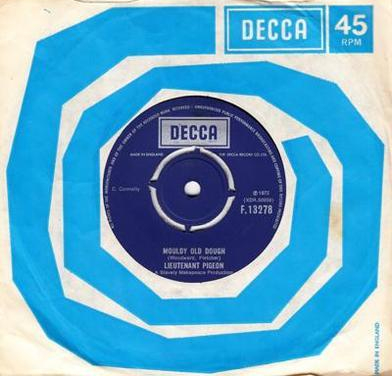Do my ears deceive me, or are we entering yet another new phase in dance? As someone who isn’t that into dance music, the way in which I’ve been noticing new trends in the genre has surprised me… From house in the mid-80s, to sampling, to the rave influenced early nineties hits… And now we enter the ‘golden age of dance’.
Please Don’t Go / Game Boy, by KWS (their 1st and only #1)
5 weeks, from 3rd May – 7th June 1992
I don’t think people actually call it that. But between 1992 and 1997, even though Britpop is what the 1990s are remembered for, it was dance music that ruled the charts. And I’d say it starts here, with what is a fairly lacklustre remake of a KC & The Sunshine Band hit from a decade or so earlier…
Even as someone who doesn’t love dance music, I’m excited at the prospect of covering some of the dance number ones on the horizon: the Prodigy, Chemical Brothers… 2 Unlimited. But for every fun and fresh electronic #1, there are lazy remakes like this. It’s got a fairly low beats-per-minute – though not slow enough to be ‘chillout’ – it’s got elements of house, a hint of trance… It dabbles in different styles, but doesn’t commit to any, and ends up quite dull. (To be fair, the original is also fairly pedestrian, compared to KC’s more famous hits. It made #3 in 1980, and was also the first Billboard chart-topper of the ‘80s.)
And yet, this fairly forgettable tune was number one for five weeks… Perhaps now is as good a time as any to address the elephant in the room. We’re almost halfway through 1992, and we’ve only had four number ones. As I mentioned in an earlier post, 1992’s turnover is the slowest for thirty years, and it’s down to two things. We’re in one of those slumps that come along every decade or so: think the early sixties, between rock ‘n’ roll and the Beatles, or the mid-seventies, between glam and new wave. Currently we’re puttering around lost between the SAW-led late-‘80s and Britpop.
In addition, the way people were buying music was changing. After decades as the main format, vinyl ‘45s were slowly being phased out in favour of CD singles. At the peak of vinyl’s popularity, in the late 1970s, an act had to sell an average of 150k copies to make number one; in 1992 it was taking only 60-70k. By the end of this decade, the CD will be at its peak, and the turnover of #1s will be at record-breaking levels (1992 has twelve #1s, 2000 has forty-two!) There will be a similar slow-down in the mid-00s, as CDs die and downloads take over, and then again in the late 2010s as streaming becomes the default for how we consume music.
Anyway, after that detour into chart logistics, we mustn’t forget that this was a double-‘A’ side, and we have another song to write about. A song that is bloody hard to track down. Nothing on Spotify, and one trippy YouTube video, which leads me to assume that ‘Game Boy’ didn’t get much airtime when ‘Please Don’t Go’ was riding high in the charts. And when I listen to it, my doubts are confirmed. It’s probably the closest we’ll ever come to a happy hardcore #1. It’s an instrumental – been a while since we featured one of those – and it feels almost retro in the way it appears to be a bunch of samples strung together to make a hot mess of a tune.
I like it, more than its flip-side, for about a minute. Then it outstays its welcome. Who decides when a ‘B’-side becomes a double-‘A’? Record companies? The band? The charts themselves? Because I’d file this with ‘Girls’ School’ and ‘Anitina’ as an ‘A’-side that is much less well-known than many ‘B’-sides. But it’s there, in the record books, and we have to cover it. And it is, like I said, an aggressive style of dance that wouldn’t have otherwise featured at #1. Plus, it references the classic game console of the age in its title, which is nice.
KWS were a trio from Nottingham, named in ABBA-style as an acronym of the members’ surnames, and this was their first ever chart hit. They owed their chart fortunes to the fact that an Italian group called Double You had covered ‘Please Don’t Go’, but their record company had failed to secure UK distribution. KWS stepped in to record a remarkably similar sounding version, resulting in three years of legal action. By the time the record labels had settled up, KWS had long since ceased to be a chart concern. Their only other Top 10 hit was another remake of a much older dance tune, George McCrae’s early disco hit ‘Rock Your Baby’.



















